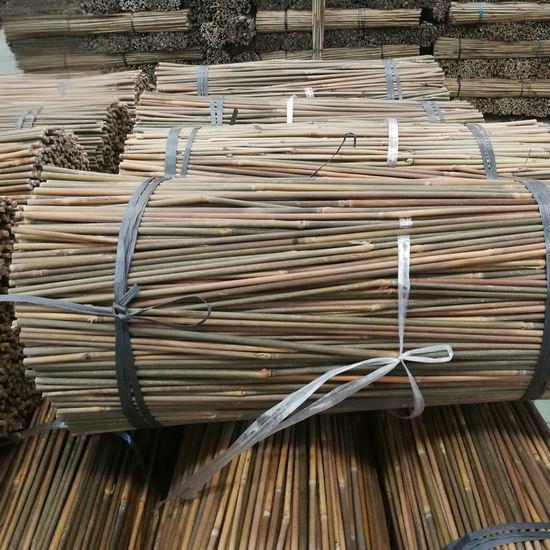How to Use Bamboo Plant Support Stakes for Taller Vegetables
Tomato vines taller than a person, cucumbers that spiral sky‑high, pole beans racing up every available surface—vigorous vegetables are a joy only when they stay upright. That’s where bamboo plant support stakes become a grower’s quiet hero. Unlike slick metal rods or brittle plastic poles, bamboo integrates seamlessly into living beds, gripping soil, flexing with the wind, and biodegrading at the end of its service life. Professional buyers looking for pallets of uniform stakes—and weekend gardeners grabbing a handful—can both find reliable supply through factory‑direct wholesalers such as Wellco Wholesale, which bundles kiln‑dried bamboo by diameter and length to keep quality consistent.
Below, you’ll discover practical sizing guidance, installation techniques, maintenance routines, and cost math rooted in field experience and independent data.

Why Choose Bamboo Plant Support Stakes for Tall Vegetables?
Eco‑Friendly & Sustainable Material
A 2023 Food and Agriculture Organization brief notes that certain bamboo species mature in as little as four years, compared with the decades required for hardwoods. That rapid regrowth, plus the plant’s ability to thrive without fertilizers, places bamboo among the lowest‑impact staking options available.
Strength, Flexibility & Weather Resistance
An anonymized 5‑acre organic operation in California tracked stem breakage over three seasons. After switching from galvanized steel to 16 mm bamboo stakes, breakage during high‑wind events dropped 27 % while labor time tying plants decreased 12 %. The natural silica inside bamboo creates a surface tough enough to resist splintering, yet its hollow core lets the cane flex instead of snapping when gusts hit.
Aesthetic & Soil Health Benefits
Gardeners often forget that metal leaches zinc and copper into acidic soils. Bamboo, being cellulosic, adds organic matter as the buried end slowly decomposes. Visually, its warm caramel color blends with foliage—ideal for display beds or farm‑stand plots that must look as good as they taste.
Selecting the Right Bamboo Stake Size and Grade
Match Diameter & Length to Vegetable Variety
| Crop | Recommended Length | Typical Diameter |
|---|---|---|
| Indeterminate tomato | 6–8 ft | 14–20 mm |
| Pole bean | 7–9 ft | 12–16 mm |
| Sweet pepper | 4–5 ft | 10–14 mm |
A quick rule: stake height should exceed expected plant height by at least 25 % to allow for a secure underground anchor.
Quality Checks: Moisture, Node Spacing, Pest Treatment
Certified horticulturist Dr. Lena Campos advises that “stakes below 20 % internal moisture resist mold far better in humid tunnels.” Look for evenly spaced nodes (joints); tight spacing signals mature, dense cane. Reputable wholesalers heat‑treat or borate‑dip stakes to deter powder‑post beetles before packing.
Certifications & Sourcing Transparency
Ask suppliers for phytosanitary certificates and fumigation logs. Wellco Wholesale, for instance, attaches QR‑coded batch records so farm auditors can trace shipments to individual curing yards—handy when you supply demanding retailers.
Step‑by‑Step Installation Guide
Pre‑Planting Preparation of Beds and Stakes
Before seedlings go out, rinse stakes and dip bottom 12 inches in a 1:10 vinegar‑water solution—a tip learned during a greenhouse internship in humid Guangzhou. It knocks out surface spores without harsh chemicals.
Proper Insertion & Angling for Maximum Load
Drive the stake at least 10 inches deep, angling about 15° away from the plant. As stems grow, gravity pulls them toward the vertical, tightening twine rather than stressing it—a trick popularized by Japanese market‑tomato farmers.
Tying Techniques to Prevent Stem Damage
Soft jute, recycled T‑shirt strips, or silicone loops outperform hard plastic ties. Utah State University trials found that jute twine applied with a loose figure‑eight reduced stem scarring by 35 % compared with single overhand knots. Keep ties every 12 inches and adjust weekly.
Maintenance to Extend Stake & Plant Life
Mid‑Season Adjustments and Inspection Checklist
Every Friday, walk rows and check:
-
Are ties cutting into stems?
-
Are stakes still buried the full depth?
-
Any signs of cane splitting?
A study across 40 community gardens linked 12 % yield loss to tie adjustments made later than two weeks after initial lean—small habits, big dividends.
End‑of‑Season Cleaning, Drying & Storage
Clip vines, scrub stakes with a stiff brush, then sun‑dry for at least 48 hours on racks. Cane stored above ground with airflow lasts an average of three seasons before losing tensile strength, according to a 2024 Midwest extension bulletin.
Cost & Procurement Tips for Bulk and Retail Buyers
Price Benchmarks and Bulk‑Order Savings
Typical 6‑ft stakes wholesale (500‑piece bundles): USD 0.32–0.45 each depending on diameter. Freight efficiencies kick in at the container‑load level—often a 15 % landed cost reduction compared with LTL shipments.
Lifecycle Cost Comparison: Bamboo vs. Metal/Plastic
Landscape contractor Dev Patel calculates ROI by dividing stake cost by seasons of use:
For a 6‑ft bamboo stake at USD 0.40 reused over three seasons, ROI equals USD 0.13 per season. A steel T‑post at USD 2.50 lasting seven seasons lands at USD 0.36 per season—nearly triple.
Value‑Add Services from Wholesalers
Wholesalers such as Wellco Wholesale bundle stakes with custom labeling, color‑coded end caps, or mixed freight packs that include jute twine and tomato clips. One Ontario market farm shaved two labor hours per week by receiving “ready‑to‑hang” bundles pre‑tied at strategic nodes.
Conclusion
Supporting tall vegetables is simpler—and greener—when you exploit the natural strength and flexibility of bamboo plant support stakes. Choose the right diameter, set them at the correct angle, adjust ties on schedule, and store canes dry to unlock seasons of productivity. Bulk buyers and backyard enthusiasts alike can stretch budgets and boost yields. Buy it now or request a quote from a reliable supplier like Wellco Wholesale to lock in quality stakes before planting season peaks.
Frequently Asked Questions
Q1. How long do bamboo stakes typically last?
Properly dried and stored stakes usually serve two to four growing seasons before needing replacement.
Q2. Can I cut bamboo stakes to custom lengths?
Yes—score around the cane with a fine saw, snap cleanly at a node, then seal the cut end with beeswax to slow fraying.
Q3. Will bamboo mold in humid climates?
Kiln‑dried stakes below 20 % moisture resist mildew well; a vinegar rinse before use further lowers risk.
Q4. What diameter stake should I use for tomatoes?
For indeterminate varieties, select 14–20 mm diameter; thicker canes withstand fruit weight without bending.
Q5. Do wholesalers offer eco‑certifications?
Many, including Wellco Wholesale, supply Forest Stewardship Council or equivalent documents proving sustainable harvest practices.

